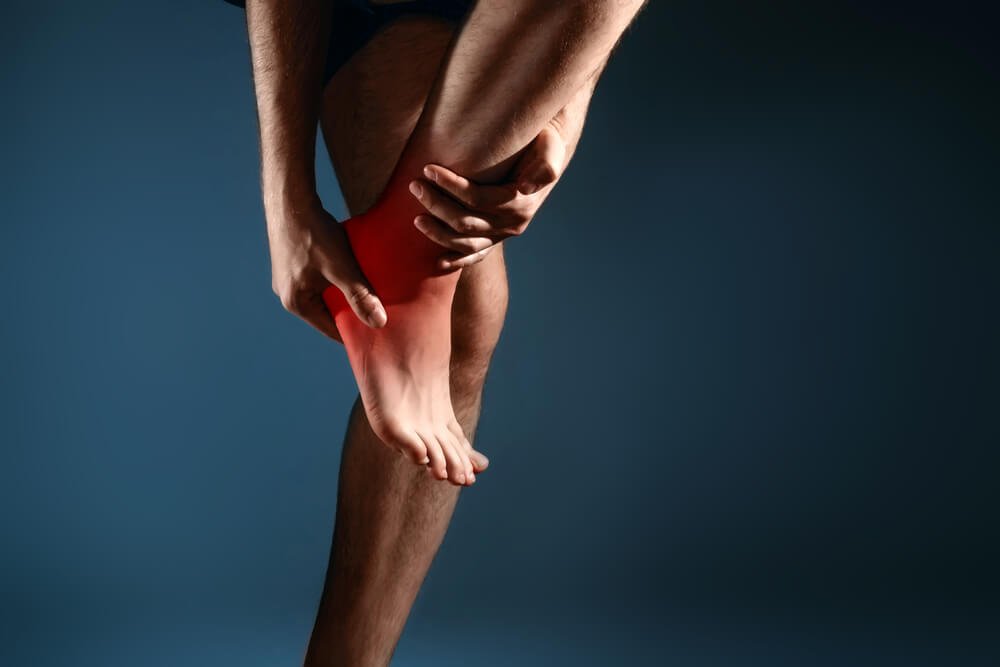Foot, Ankle & Heel Pain
Podiatrist, Foot, Ankle & Heel Pain Specialists in Hartford & Rocky Hill, CT
Heel Pain / Plantar Fasciitis / Heel Spurs
At Hartford Podiatry Group we treat a lot of heel pain or plantar fasciitis in our office. Many of the symptoms include pain when you first get up in the morning, burning, numbness and increased symptoms by the end of the day. The pain is usually caused by tightening of the plantar fascia ligament located on the bottom of the foot. The plantar fascia ligament supports the arch. When you're resting, the ligament contracts. As you start to walk, the ligament pulls and may tear slightly causing pain. Heel pain can also be brought on by trauma, over exertion, ill- fitting shoes or poor foot alignment.
We initially treat plantar fasciitis conservatively with:
Anti-Inflammatory Medication
Plantar Fascia Exercise
Cortisone Injections
Proper foot support is one of the most important treatments we recommend. The purpose of foot support is to stop the ligament from tearing, thereby, getting at the cause of the problem. We often prescribe custom orthotics for the best possible foot support. Custom orthotics are inserts that fit into your shoes, which are custom molded specifically to your foot, to correct the faulty foot alignment and bring your foot into a more correct position.
We find that most of our patients respond to conservative treatment with favorable outcomes. For those patients that require additional treatment surgery may be necessary. So, if you're suffering with heel pain, don't wait for it to become a chronic problem. Contact us today, and we'll get you back, to the activities you love, in no-time.
Achilles Tendinitis / Tendon Injury
Achilles tendinitis is a medical condition that causes pain along the back of the leg near the heel. This happens when the Achilles tendon is constantly abused. This condition is common among athletes and middle age people who are actively engaged in sport activities. The Achilles tendon is a band of tissue that connects calf muscles at the back of the lower leg to your heel bone. It allows a person to extend the foot and point the toes to the floor. This is also the thickest, longest and strongest tendon of the body.
Tendon Injury Treatment & Management
Generally, tendons such as the Achilles tendon do not heal rapidly or completely. A lifestyle change is sometimes needed to prevent the recurrence of Achilles tendinitis. The aim in treating Achilles tendinitis is to relieve the pain and reduce the swelling. Treatment of the symptoms includes:
Resting The Leg
Cold Compression Therapy
Non-Steroidal Anti-Inflammatory Medication
Physical Therapy
Heel Lift
Using Of A Brace Or Cast To Keep The Heel And Tendon Still
Surgery may be needed if the symptoms do not improve
Schedule a consultation with Hartford Podiatry to assess the severity of the condition and select the best procedure to repair the Achilles tendon.
Ankle Sprains
Ankle sprains are an extremely common injury. They involve possible joint damage resulting in swelling, instability and pain, to more severe damage, such as torn ligaments, bruised cartilage and broken bones. Immediate treatment includes rest, ice, compression and anti-inflammatories. Unfortunately, as many as 80% of untreated sprained ankles result in prolonged symptoms. These can include chronic pain or ankle instability, that makes a person prone to repetitive injury later in life and arthritic changes.
In our practice, our Podiatrists utilize the latest technology to determine if there is a fracture, dislocation or torn ligaments. If you've sprained your ankle or have a history of ankle sprains, early evaluation and aggressive treatment is the best way to avoid chronic pain, instability and arthritis of the involved joints. Make an appointment immediately to be evaluated and to learn more about all of your treatment options.
Foot or Ankle Fractures
A broken bone is also known as a fracture. There is a common misconception that a broken bone is worse than a fracture. In reality they are the same. There are many different types of fractures or breaks. A bone can be broken and the fragments can be out of position. We call this a displaced fracture. Conversely, if they are in good alignment it's called a non-displaced fracture. If a bone is broken and you can barely see it on an x-ray, it is a hairline fracture. Finally, if a bone is broken and one of the fragments has punctured the skin, we call this an open or compound fracture. Since open fractures can easily become infected immediate surgical management is required. Broken bones are usually splinted initially to prevent bone movement and further damage to the soft tissues that surround them. If the fracture is displaced it may need to be set. In certain fractures, setting them can be difficult. In these types of fractures, surgery is also indicated. This will provide the best opportunity for healing.
Even though all of this sounds very scary, most fractures can be managed in a cast without going to the OR. Even simple fractures of the toes respond very well to this treatment. And yes, we do put casts on toes. Not the plaster or fiberglass most people think of. Instead, we use a mesh tape which holds the toe in place. If you, or someone you know has sustained an injury to the foot or ankle Hartford Podiatry Group will make every attempt to see you ASAP. Call us today.




